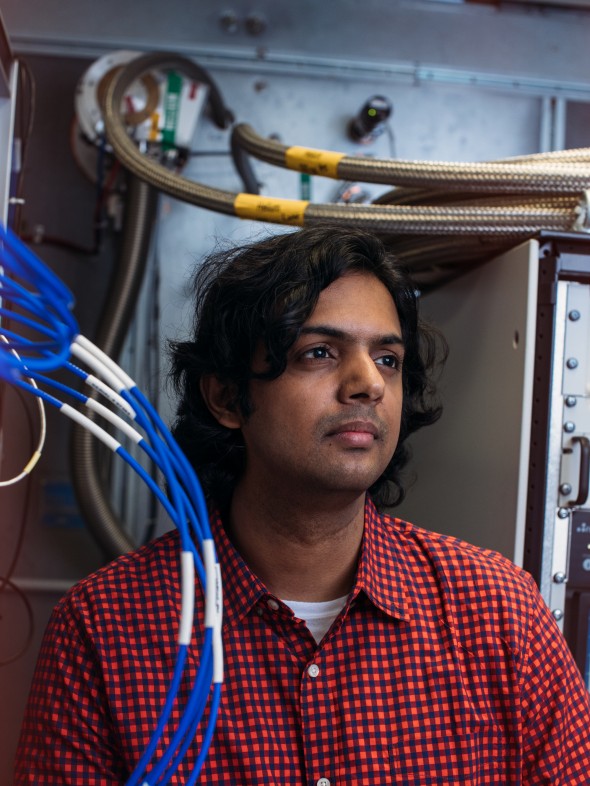
Abhinav Kandala
32
IBM Research
Country of birth: India
Paving the way for quantum-computer-powered drug and material development
More accurate computer models of molecules could help predict useful properties for everything from new drugs to better batteries. But simulating the behavior of the atoms and electrons they consist of means calculating huge numbers of possibilities, so even powerful computers use approximations.
Abhinav Kandala is solving this problem by using quantum computers to simulate molecules. In 2017 he simulated three-atom beryllium hydride, the largest molecule modeled on a quantum computer to date. This was a crucial step that laid the groundwork for precise simulations of larger molecules, which could lead to the discovery of new medicines and materials.
Quantum computers are made of qubits—the physical elements that encode information the way bits do in a conventional computer. Because qubits are governed by quantum mechanics, they could model other particles subject to its rules, like atoms and electrons, more easily than conventional computers. Kandala, who works for IBM Research in New York, says this makes simulating molecules one of the technology’s “killer applications.”
Since 2017 he’s made an even more fundamental contribution. Because quantum states are fragile, quantum computers are error-prone, and compensating for this requires large numbers of qubits. But today’s devices consist of only tens of qubits—not enough to create a fault-tolerant quantum computer. Kandala has demonstrated a way to harness errors to boost accuracy without increasing the number of qubits. His experiments allow him to identify trends that could be used to extrapolate what should be observed in the absence of errors, an advance that could speed practical applications of near-term quantum computers.
